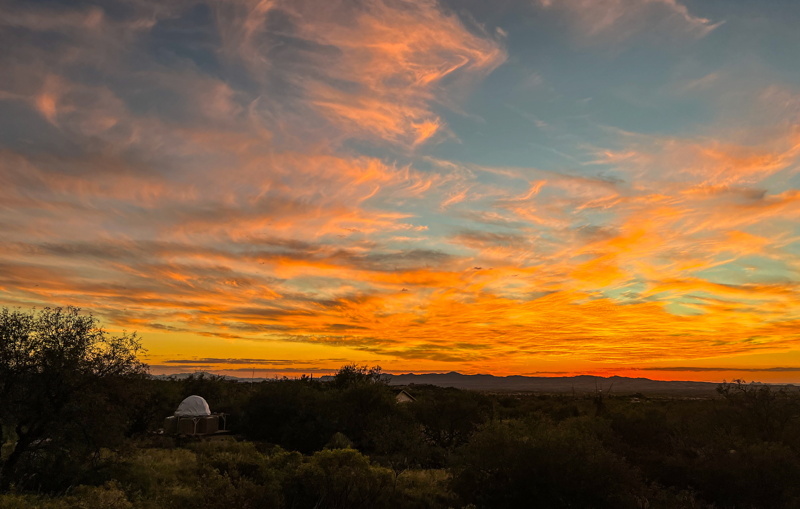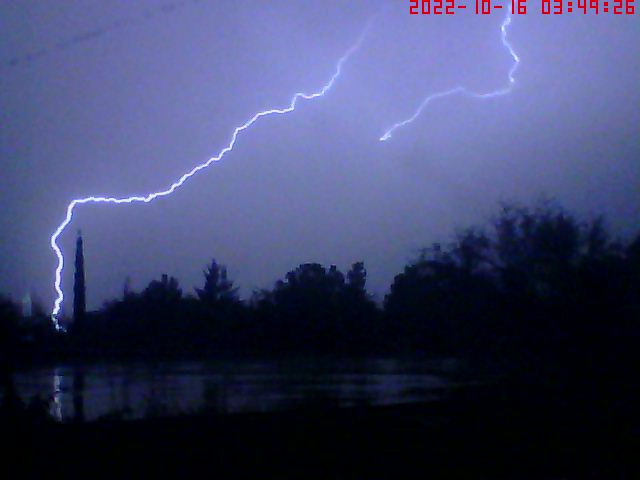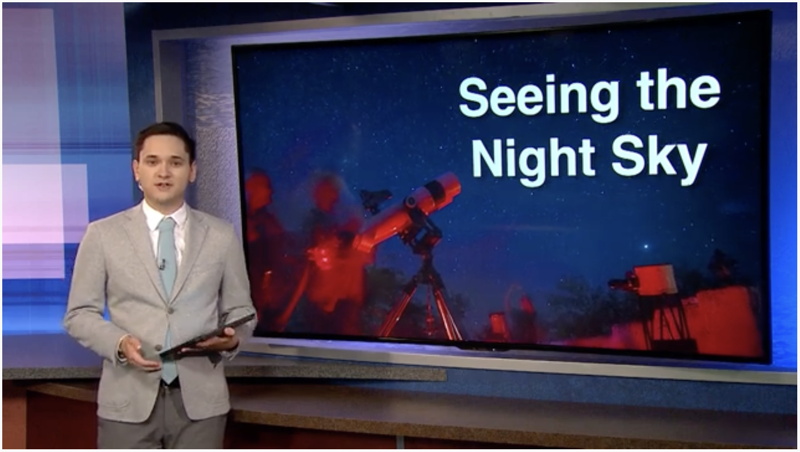Updates, New Project: Herschel 400 Catalog
Posted: 19 October 2022
My report on the "David H. Levy Arizona Dark Sky Star Party & Oracle Dark Sky Cultural Festival" has been posted. It was an exciting, hectic, wonderful, and well-received event here.
Cloudy skies returned on Sunday, 26 September 2022. Due to the Star Party, cloudy nights, and travel, I did not open the observatory for over four weeks. You can see reports of visits to Griffith Observatory and Mt Wilson Observatory on my Visits to Other Observatories web page as well as other photos from Our California Vacation.
On Saturday, 8 October, 0.72" rain was received at the observatory. If the sky has to be cloudy, it is nice to have an Arizona sunset like this one on Wednesday, 12 October.

Click or tap on image for larger version
Saturday, 15 October, had some brief thundershowers (0.26"). Sunday, 16 October, also had some thunderstorms (total rain 1.26). A storm in the afternoon had 0.7" in 20 minutes with a 10-minute pea-sized hailstorm.

Click image to view the 5 second video
|
Open: Tuesday, 18 October 2022, 1807 MST Temperature: 71°F |
Session: 1791 Conditions: Clear, breezy |
Equipment:
12" f/8 LX600 w/StarLock
2" 24mm UWA eyepiece
2" 5.5mm 100° eyepiece
2" 9mm 100° eyepiece
Camera:
iPhone 13 Pro Max
1815 MST: Dome Cover OFF.
SYNCed the observatory clock to WWV time signals.
1822 MST: LX600 ON, StarLock OFF, High Precision OFF.
Viewed Saturn, 102X and 443X. Seeing was terrible, with no details visible. Tried 271X but the view did not improve. I had planned to do some planet imaging but the poor seeing bad that impossible.
1835 MST: Viewed Jupiter and the four Galilean Moons, 102X. Lousy view from the poor seeing.
1839 MST: High Precision ON.
Slewed to NGC7479 (galaxy). It was not yet visible in the twilight sky. I had planned to image it this session, but deferred that to another session due to the poor seeing.
1851 MST: Took this handheld iPhone 13 Pro Max of Cassiopeia Observatory with the constellation of Cassiopeia looking down at it, Camera app (Night Mode, 3 seconds, 1X lens).

1857 MST: NGC7479 (galaxy), 102X. It was faintly visible.
1900 MST: I began a new project: observing objects in the Herschel 400 Catalog, 102X. I plan to image the objects over time. This night I observed NGC6755 (open cluster), NGC6756 (open cluster), NGC6781 (planetary nebula), NGC6802 (open cluster), NGC6818 (planetary nebula), NGC6823 (open cluster), NGC6826 (planetary nebula), NGC6830 (open cluster), and NGC6834 (open cluster). Many were very nice objects that I had never observed before. I have posted my Herschel 400 Catalog (Excel document) for those who may want to pursue the List.
Also viewed Albireo (double star), 102X. Always a pretty sight.
SYNCed the AutoStar on the star Altair.
Viewed Saturn and then Jupiter, 102X. Seeing still bad.
1933 MST: LX600 OFF.
1944 MST: Took a Sky Quality reading and reported the result to Globe at Night.
Even with the poor seeing, it was nice to be back in the observatory.
|
Close: Tuesday, 18 October 2022, 1948 MST Temperature: 62°F |
Session Length:1h 41m Conditions: Clear, windy, SQM 20.84 |
Cronkite News of Arizona PBS did a video story about the big Star Party in Oracle in September. The story starts at 11:13. (Unfortunately, they got my name wrong.)
See my Mementos photo album for an update (bottom of the page) from the "David H. Levy Arizona Dark Sky Star Party & Oracle Dark Sky Cultural Festival".
NOIRLab posted an update about Kitt Peak's recovery from this summer's wildfire.
Comments are welcome using Email. Twitter users can use the button below to tweet this report to their followers. Thanks.
Cassiopeia Observatory Home Page
Copyright ©2022 Michael L. Weasner / mweasner@mac.com. Email Etiquette.
URL = http://www.weasner.com/co/Reports/2022/10/19/index.html

